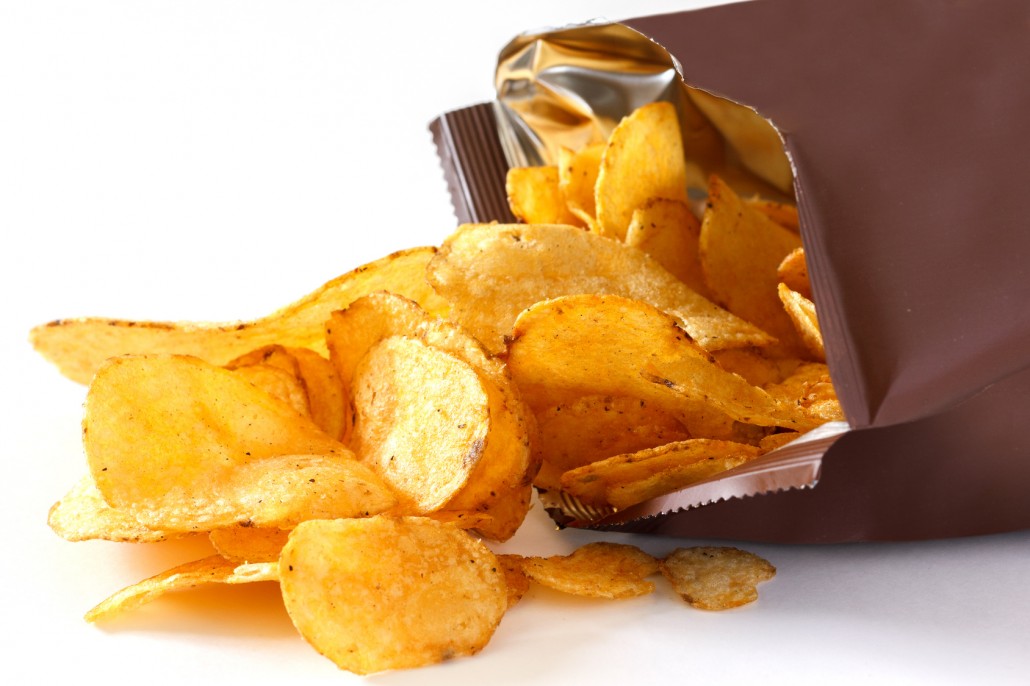When it comes to sustaining good health, feeding the body properly is absolutely essential – which is why I advise my clients to eliminate as many processed foods from their diet as possible. Why is this so critically important? Because virtually all processed foods are loaded with bad-for-the-body, hormonally disruptive additives that wreak havoc on your health. Topping the charts of dangerous additives is none other than the deservedly maligned silent killer – monosodium glutamate (MSG)
First, before we continue, I must clear up the fact that, like Trans-fat, there are actually two types of glutamic acid (the active compound in MSG). These types are “bound” and “free,” and it’s important to note the distinction between them.
Bound glutamic acid refers to glutamate in a whole, unmodified protein source, and is therefore digested and absorbed slowly. This type of natural occurring glutamate imposes no health threats, and therefore need not be of concern.
Free glutamic acid, on the other hand, is a synthetic chemical manufactured to be added to processed foods and is no longer bound to other amino acids. Therefore, it is absorbed very rapidly, causing overwhelming spikes in the concentration of glutamate in the blood which become potentially dangerous.
Please note, from here going forward when using the words glutamate, glutamic acid or MSG I will be referencing to the dangerous free-form, synthetic or man-made version.
This “so called” flavor enhancer is a known carcinogen, endocrine disrupter and killer of brain cells, which may also be linked to a host of medical issues, including cardiac problems, kidney problems, and neurological disorders like ADHA, Autism, Alzheimer’s, Parkinson’s and Lou Gehrig’s disease just to name a few. So, it should be no wonder why I feel such a strong need to spread the word about this devastating toxin that millions of people eat every day. (1, 2, 3)
As I’m sure we’re all pretty well aware, processed foods fill the body with many unhealthy additives. Whole foods do not. MSG, which is found in an estimated 80 percent of processed foods, is notably one of the worst food additives on the market and can set off a variety of adverse reactions, such as; skin rashes, headaches, moodiness, irritability, IBS, heart palpitations, depression and more, depending on your individual tolerance. How fast and how hard you get hit by these problems depends on your ability to tolerate it, but regardless, eating foods laced with MSG can become pure devastation to your organs. In short, MSG has the ability to make people feel really lousy in the short term and potentially, very, very sick in the long-term.
What exactly is MSG?
MSG, chemically, is approximately 21 percent sodium (in other words salt), 78 percent glutamate (which is a non-essential amino acid and a neurotransmitter with an excitatory effect, which I’ll explain coming up) and up to 1 percent contaminants. It’s quite misleading that the food industry conveys MSG as a flavor enhancer or meat tenderizer. In reality, MSG has very little taste at all, yet when eaten it tricks your tongue by artificially enhancing the flavor of the food you’re consuming. This, along with the excitatory response it unleashes, makes you crave more, so you continue to eat well after you are already full. This is precisely why the food industry loves adding it to so many of the processed foods we consume today. (4)
This insidious ingredient didn’t actually become common to our western food culture until after World War II, when the U.S. military recognized how much tastier Japanese rations were than the U.S. versions due to the addition of MSG. Since then its widespread use has bled its way into many of our foods including soups, salad dressings, processed meats, frozen entrees, ice cream, and frozen yogurt, crackers, bread, canned tuna, and very often in “low fat” and “no fat” foods to make up for flavor lost when fat is reduced or eliminated.
MSG can also be found in cosmetics, pharmaceuticals, dietary supplements and infant formula. In addition to this it is also used in vaccines, including vaccines used on children, in hospitals where it is hidden in Jello, soup, and some I V solutions which are given to already sick patients. Also, please note that its use is without restriction.
So why is MSG so bad?
First, let me start by saying that we have glutamate receptors throughout our entire body with the highest percentage of these receptors being in our nervous system and brain. As explained before, MSG is a neurotransmitter that has an excitatory effect on our cells. Basically what this means is when we consume foods containing MSG it stimulates our cells by over exciting them causing them to fire rapidly –kind of like your cells having a big party. (5, 6)
Depending on the dose and one’s tolerance, this excitation has the ability to damage and even kill cells. And because free glutamic acid is the same neurotransmitter that your brain, heart and nervous system use to initiate certain processes in your body, it can cause these cells to become so overly activated that they start to malfunction and in some cases burnout and die. In extreme cases this over-stimulation can cascade, initiating things like brain damage, learning disabilities, cardiac arrhythmias and even sudden death. (7)
On a slightly larger scale, many other adverse reactions have also been linked to regular consumption of MSG including: (8)
- Obesity
- Type II Diabetes
- Eye damage
- Headaches
- Fatigue and disorientation
- Depression
Further, even the FDA admits that short-term reactions known as Chinese Restaurant Syndrome, or now more commonly referred to as MSG Symptom Complex, can occur when large doses are consumed. According to the FDA, MSG Symptom Complex can involve symptoms such as:
- Numbness
- Burning sensation
- Tingling
- Facial pressure or tightness
- Chest pain or difficulty breathing
- Headache
- Nausea
- Rapid heartbeat
- Drowsiness
- Weakness
Does “No Added MSG” Really Mean MSG-Free?
Like with nearly everything, if there is a rule, then there is (more than likely) a hidden loophole somewhere. So, when it comes to MSG, why would it be any different? Here’s how this one works: the processed food industry is allowed to say “no added MSG”, “contains no MSG” or “MSG-Free” boldly on their package even though that product still contains glutamate, the main component in MSG.
While it may seem like hair-splitting, the phrases “no added MSG,” “contains no MSG,” and even “MSG-free” are by no means a guarantee that glutamate isn’t in the processed foods you buy. Even some processed organic foods are guilty of hiding the nasty stuff. In many cases, knowing what to look for and a close label check will help you detect hidden MSG and in this article I’m going to help YOU become a master MSG detective.
How to determine if MSG is in your foods
Chances are if you saw MSG on the label, you’d probably put the product right back on the shelf and keep walking. Food manufacturers know this so they’ve devised some clever ways to hide this ingredient on package labels. This sneaky technique is known as “clean labeling.” Basically a “clean label” is one that does not use ingredient names that many consumers would consider as bad. For this reason it’s rare that you’ll ever actually see the phrase “MSG” on a label. Instead, manufacturers hide the evidence by making MSG difficult for consumers to identify.
So, as discussed earlier “glutamate” (the chemical in MSG) often lurks behind murky phrases such as “natural ingredients,” “natural seasonings,” “natural flavors,” or more specific ones that don’t easily reveal the presence of MSG, such as maltodextrin, gelatin, glutamic acid, citric acid, yeast extract or modified corn starch to name a few.
Because of the fact that the Food & Drug Administration (FDA) doesn’t consider glutamate hazardous, it’s easy for food processers to blur the presence of MSG, making it nearly impossible for the average consumer to recognize. And while millions of us are trying to avoid this undesired ingredient, the FDA has allowed dozens of alternative names for Manufactured Glutamic Acid.
Here is a list of FDA approved ingredients you need to be on the lookout for that contain Glutamic Acid – the active compound in MSG hidden in your foods:
- Autolyzed Plant Protein
- Autolyzed Yeast
- Calcium Caseinate
- Citric acid
- Gelatin
- Glutamate
- Glutamic acid
- Hydrolyzed Plant Protein (HPP)
- Hydrolyzed Vegetable Protein (HVP)
- Maltodextrin
- Modified corn starch
- Monopotassium Glutamate
- Sodium Caseinate
- Soy Protein Concentrate
- Textured Protein
- Vetsin
- Yeast Food or Nutrient
- Yeast Extract
Not only are some food makers hiding Manufactured Glutamic Acid (the active ingredient in Monosodium Glutamate) on their labels, some even go so far as to claim “No MSG” while in small print they mention they do contain ingredients which have Manufactured Glutamic Acid in them.
Take Home:
In order to completely eliminate MSG from our diet we would literally have to abandon all processed foods and never go out to eat again, and that’s just not reality for most of us. So instead, by understanding where it hides and getting familiar with all of its pseudo holding counterparts, we have the best chance of getting it as close to zero as possible. Use the list provided above to help you identify where MSG is being hidden in your foods.


